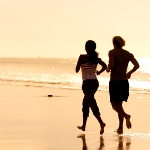CrossFit Isn’t Just For Hardcore Fitness Maniacs
While CrossFit certainly is for hardcore fitness maniacs, it’s for everyone else too. You may have never worked out a day in your life, but I guarantee you if you walked into CrossFit Elysium and joined up, the first thing that would happen is that you’d be warmly welcomed by the coaches and the other box members, and the coaches would devise a routine for you to get started. Ultimately you’ll be training alongside CrossFitters representing a broad scale of ability and experience—but workouts will be scaled to your level. I have met several CrossFitters that live at the higher frequencies of the EM band—they remind me of wrestlers who lived on my dorm floor at the University of Iowa many years ago—they exist 24/7 in a vacuum of extreme discipline—severe diet protocols, eradication of distraction, living in compression wear, not really smiling much and transmitting an overall level of grimness. I have nothing but admiration for these folks. Although—just as it was for me living in the Hillcrest dorm near Dan Gable’s Hawkeye wrestlers—I like enjoying a cold beer more often than once a month. And from what I’ve seen a more moderate approach applies to most of the CrossFitters in the world. My point? CrossFit is for anyone interested. In a way the perception versus the reality reminds me of triathlon. Maybe people assume that being a triathlete means peeling off Ironmans. But most of the triathletes in the USA are doing short triathlons that take an hour or less and can be more inclusive than running events. Same with CrossFit: it’s for all. Continued here


